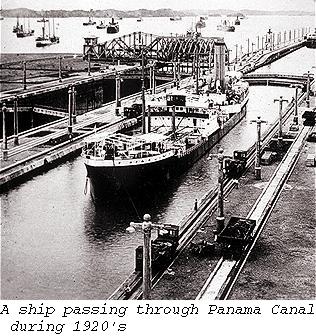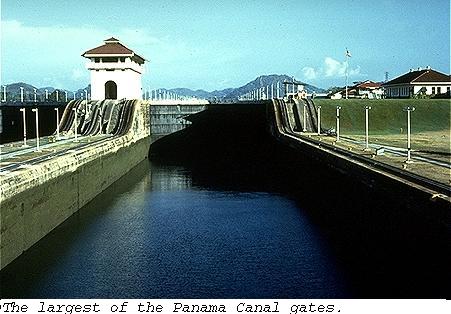The artificial channels that connect natural bodies of water are called canals. A canal may be dug to drain low areas, to float away sewage, to bring water to dry farmlands, or to carry water from storage places, such as reservoirs, to city water-supply systems. Some canals provide a swift flow of water to make electricity at hydroelectric plants. Others are built as "detours" in rivers. These canals enable boats to avoid waterfalls, rapids, and dams.

The most important are the navigation canals that connect or take the place of natural bodies of water. These may be either ship or barge canals. Most ship canals can carry all but the very deepest and widest ships. Barge canals carry only shallow boats. In some navigation canals, the water keeps flowing from the source to the mouth. In others, the water is confined and still, usually through the use of locks. Ships and boats sometimes move through canals under their own power. Sometimes they are towed by tugs or by small locomotives running on rails along the banks. In earlier times the ships or boats were pulled by horses or mules plodding along the banks.
Ship canals that link oceans and seas shorten the distance between many ports by thousands of miles. This makes them important in trade between countries. In wartime these canals are well protected because warships, transports, and supply vessels must pass through them. The Suez Canal, which links the Mediterranean and the Red seas, and the Panama Canal, which provides a short cut between the Atlantic and Pacific oceans, are notable examples.
The Kiel Canal in Germany connects the Baltic and the North seas. It saves ships a long journey around Denmark. The Baltic-White Sea Canal was built so that ships traveling between St. Petersburg and Archangel could avoid having to make the 2,800-mile trip around the Scandinavian peninsula. The twin canals of Sault Ste. Marie, which connect Lake Superior and Lake Huron, carry more freight than any of the canals that link oceans and seas.
When two natural bodies of water stand at different levels, building a canal between them presents a complicated engineering problem. To make up for the difference in level, engineers build one or more water "steps," called locks, that carry ships or boats up or down between the two levels.
A lock is an artificial water basin. It has a long rectangular shape with concrete walls and a pair of gates at each end. When a vessel is going upstream, the upper gates stay closed as the ship enters the lock at the lower water level. The downstream gates are then closed and more water is pumped into the basin. The rising water lifts the vessel to the level of the upper body of water. Then the upper gates open and the ship passes through. For downstream passage, the process works the opposite way. The ship enters the lock from the upper level, and water is pumped from the lock until the ship is in line with the lower level. A lock may be large enough to hold two or more ships or boats.
Often the difference in levels is so great that a series of locks are needed. They may be connected to one another or may be spaced at intervals along the canal. Sometimes a series of locks are built so that ships "climb" up one side of a ridge and down the other. The Panama Canal lock system was built for this purpose.

Straightening or deepening rivers and then building locks in them where needed is called canalizing. About 25,480 miles of rivers in the United States have been canalized.
Drainage canals present special building problems. They must be dug so that they slope evenly from the area to be drained to the place where the water empties. If the canal passes through rolling country, the canal bottom and banks may have to be built even higher than the surrounding lowlands.
If the canal is dug through soft earth or sand, it gradually fills in and then, to keep it open, it must be cleaned out, or dredged. Water flowing swiftly through a canal, as in a canal that furnishes water power for producing electricity, tends to "scour" the bottom and sides. This widens and deepens the canal, and the flow of water slows down.